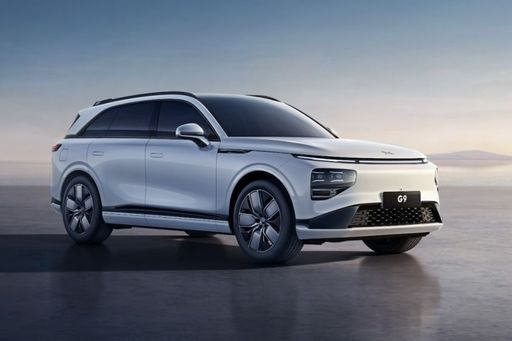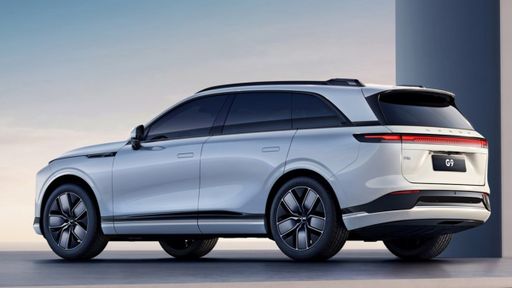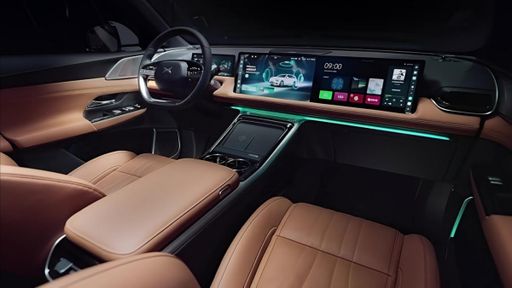XPeng G9 vs ZEEKR 7X – différences et prix comparés
Coûts et efficience :
En regardant le prix et les coûts d’usage, les plus grandes différences apparaissent souvent. C’est là qu’on voit quel modèle convient le mieux au budget sur le long terme.
ZEEKR 7X bénéficie d’un avantage légèrement en matière de prix – il démarre à 53400 €, tandis que le XPeng G9 commence à 60100 €. Cela représente une différence d’environ 6665 €.
Côté consommation électrique, l’avantage revient au ZEEKR 7X : avec 17.70 kWh / 100 km, il se montre à peine sensible plus efficient que le XPeng G9 (18.40 kWh). L’écart est d’environ 0.70 kWh.
En matière d’autonomie, le ZEEKR 7X s’en sort minime mieux : jusqu’à 615 km, soit environ 30 km de plus que le XPeng G9.
Moteur et performances :
Sous le capot, on comprend vite quel modèle est le plus sportif et lequel prend l’avantage au démarrage.
En termes de puissance moteur, le ZEEKR 7X affiche un avantage un peu – 646 CH contre 575 CH. Soit un gain d’environ 71 CH ch.
En accélération de 0 à 100 km/h, le ZEEKR 7X est quelque peu plus rapide – il réalise le sprint en 3.80 s, contre 4.20 s pour le XPeng G9. Soit environ 0.40 s d’écart.
En vitesse maximale, le ZEEKR 7X fait minime mieux – il atteint 210 km/h, tandis que le XPeng G9 plafonne à 200 km/h. L’écart est d’environ 10 km/h.
On note aussi une différence de couple : ZEEKR 7X tire à peine sensible plus fort avec 710 Nm contre 695 Nm. L’écart est d’environ 15 Nm.
Espace et usage au quotidien :
Habitacle, volume de coffre et charge utile déterminent la praticité au jour le jour. Ici, le confort et la flexibilité font la différence.
Places assises : Le offre plus de places – contre .
En poids à vide, le XPeng G9 est minime plus léger – 2210 kg contre 2395 kg. L’écart est d’environ 185 kg.
En volume de coffre, le XPeng G9 offre un peu plus d’espace – 660 L contre 539 L. La différence est d’environ 121 L.
Qui remporte la course ?
Le ZEEKR 7X s’avère montre de petits atouts et devient ainsi notre DriveDuel Champion !
Le ZEEKR 7X est le meilleur polyvalent de ce comparatif.

ZEEKR 7X
Coûts et Consommation
Voir l’analyse détaillée
Moteur et Performance
Voir l’analyse détaillée
Dimensions et Carrosserie
Voir l’analyse détaillée
XPeng G9
L'XPeng G9 impose sa présence avec un design futuriste et un habitacle qui joue la carte du luxe connecté, idéal pour ceux qui veulent allier confort et technologies avant-gardistes. Sur la route il se montre à la fois doux et alerte, avec des aides à la conduite qui frôlent la science-fiction — parfait pour les technophiles qui aiment voyager sans prise de tête.
détails @ XPeng Motors
@ XPeng Motors
 @ XPeng Motors
@ XPeng Motors
 @ XPeng Motors
@ XPeng Motors
ZEEKR 7X
La Zeekr 7X impose une silhouette moderne et fluide qui ne passe pas inaperçue, avec une finition intérieure soignée et un équipement technologique qui joue dans la cour des grands. À conduire, elle combine confort et assurance sur la route, idéale pour qui cherche une alternative audacieuse aux stands habituels — pratique au quotidien et assez charmante pour provoquer des regards.
détails
 @ XPeng Motors
@ XPeng Motors
|
|
|
|
|
Coûts et Consommation |
|
|---|---|
|
Prix
60100 - 73200 €
|
Prix
53400 - 63500 €
|
|
Consommation L/100km
-
|
Consommation L/100km
-
|
|
Consommation kWh/100km
18.4 - 20.1 kWh
|
Consommation kWh/100km
17.7 - 19.9 kWh
|
|
Autonomie Électrique
502 - 585 km
|
Autonomie Électrique
480 - 615 km
|
|
Capacité de la Batterie
78.2 - 92.2 kWh
|
Capacité de la Batterie
-
|
|
CO2
0 g/km
|
CO2
0 g/km
|
|
Capacité du réservoir
-
|
Capacité du réservoir
-
|
Dimensions et Carrosserie |
|
|---|---|
|
Type de Carrosserie
SUV
|
Type de Carrosserie
SUV
|
|
Sièges
5
|
Sièges
5
|
|
Portes
5
|
Portes
5
|
|
Poids à vide
2210 - 2395 kg
|
Poids à vide
2395 - 2535 kg
|
|
Capacité du coffre
660 L
|
Capacité du coffre
539 L
|
|
Longueur
4891 mm
|
Longueur
4787 mm
|
|
Largeur
1937 mm
|
Largeur
1930 mm
|
|
Hauteur
1670 - 1680 mm
|
Hauteur
1650 mm
|
|
Capacité maximale du coffre
1576 L
|
Capacité maximale du coffre
-
|
|
Charge utile
-
|
Charge utile
455 - 485 kg
|
Moteur et Performance |
|
|---|---|
|
Type de moteur
Électrique
|
Type de moteur
Électrique
|
|
Transmission
Automatique
|
Transmission
Automatique
|
|
Détail de la Transmission
Réducteur
|
Détail de la Transmission
Réducteur
|
|
Type de Traction
Propulsion, Traction Intégrale
|
Type de Traction
Propulsion, Traction Intégrale
|
|
Puissance (ch)
351 - 575 CH
|
Puissance (ch)
421 - 646 CH
|
|
Accélération 0-100km/h
4.2 - 6.6 s
|
Accélération 0-100km/h
3.8 - 6 s
|
|
Vitesse Maximale
200 km/h
|
Vitesse Maximale
210 km/h
|
|
Couple
465 - 695 Nm
|
Couple
440 - 710 Nm
|
|
Nombre de Cylindres
-
|
Nombre de Cylindres
-
|
|
Puissance (kW)
258 - 423 kW
|
Puissance (kW)
310 - 475 kW
|
|
Cylindrée
-
|
Cylindrée
-
|
Général |
|
|---|---|
|
Année du Modèle
2025
|
Année du Modèle
2025
|
|
Classe d’Efficacité CO2
A
|
Classe d’Efficacité CO2
A
|
|
Marque
XPeng
|
Marque
ZEEKR
|
Quels types de transmission sont disponibles pour le XPeng G9 ?
Disponible en Propulsion ou Traction Intégrale.
Réfléchissez à effectuer les trajets courts à pied ou à vélo.
Roulez de manière plus écologique : envisagez le covoiturage.
Utilisez les transports en commun pour vos déplacements quotidiens.
Pour en savoir plus sur les émissions de CO₂ et la consommation d'énergie de ce véhicule, consultez les informations légales disponibles.
Les prix et les données affichés sont des estimations basées sur les prix catalogue allemands et peuvent varier selon les pays. Ces informations n’engagent pas contractuellement.
